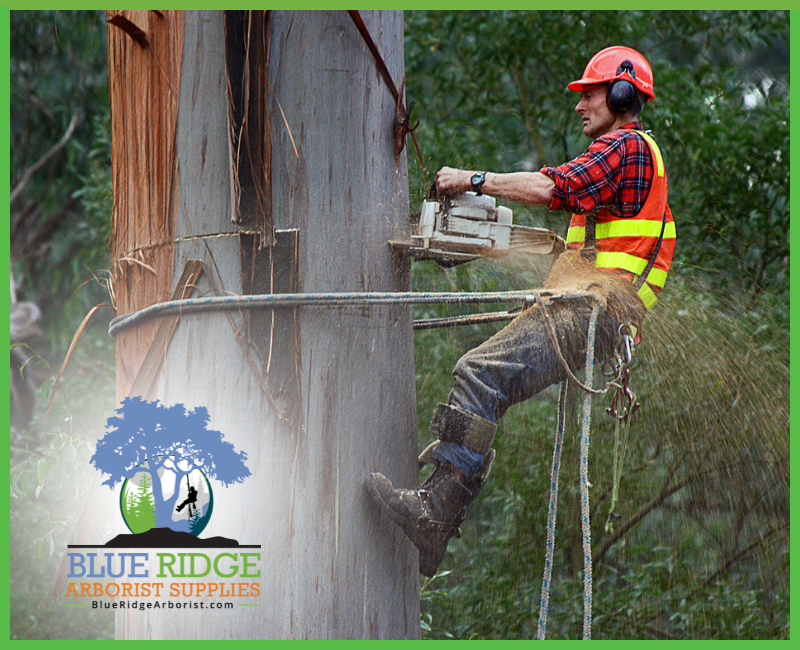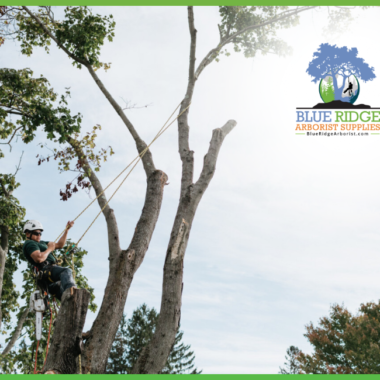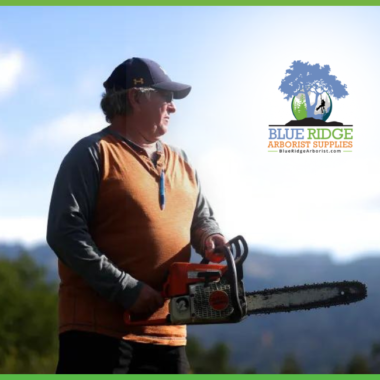When we talk about safety, there are never enough precautions that can be taken. We can always learn new procedures and review the way we use the knots. Here you can check some of the basic knots Arborists are expected to know. Have any to add? We would love to hear about them. Better yet, send us a video of you creating them in action — with your company name, and we will tag you and post!
The knots that an Arborist is expected to know vary from place to place, and from crew to crew. These knots are used by people earning their living by climbing, sitting on, hanging from, trimming, and felling trees. Many knots must, of course, be the same as those taught elsewhere, e.g., for climbing or search and rescue. They will be covered on this page but not at the top. The five knots listed first will be those most likely to be associated with the work of Arborists.
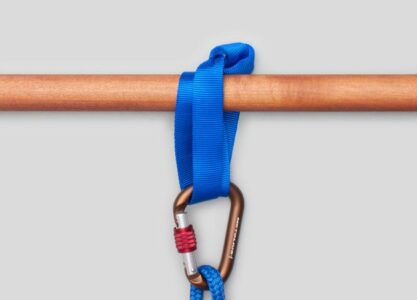
Basket Hitch
The Basket Hitch employs a closed loop made of rope, or webbing. Arborists commonly wrap it around a branch to provide an anchor point or a false crotch. Basket Hitches are widely described in overhead rigging and lifting – often to form a cradle for a load. However, when used for this purpose, there is a risk of the load sliding out of the hitch.
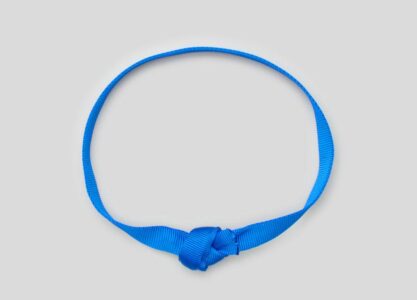
Beer Knot
The Beer Knot is a bend used to join two ends of a length of tubular webbing to create a secure loop. It is commonly used by climbers and arborists to create slings. One end of the tubular webbing is inserted inside the other and then secured with an Overhand Knot which embraces both the ends.
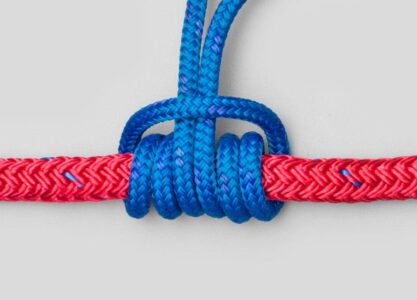
Prusik Loop
The Prusik Loop Knot is constructed by joining together the two ends of an accessory cord (5 or 6 mm) using a Double or Triple Fisherman’s Bend. The Prusik Knot allows a rope to be climbed – “Prusiking.“ Two Prusik loops are alternately slid up the static rope: a long Prusik loop reaches the climber’s foot – to allow leg power for ascending, and a second short Prusik loop is attached to the harness – to allow sitting.
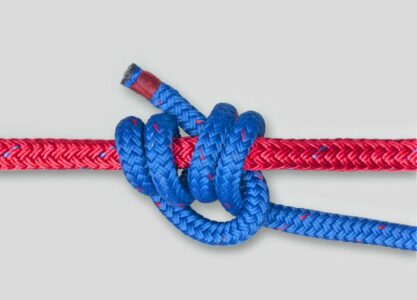
Blake’s Hitch
The Blake’s Hitch is a Friction, or Slide and Grip, hitch. It is used by arborists for ascent and descent. Like other Slide and Grip Knots, the strain should only be taken on the line below the hitch. Never pull on the Blake’s Hitch itself for traction because holding the knot and pulling directly on it loosens the knot and allows descent – unexpected and uncontrolled. Blake’s Hitch has the advantage that it can be tied in the end of a piece of rope instead of requiring a Prusik Loop. In practice it is a stable knot which does not creep or roll along the rope.
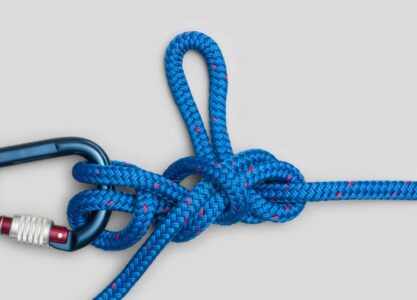
Munter Mule
The Munter Mule Combination Hitch: The Munter Hitch (Italian Hitch) allows controlled descent when rappelling (abseiling). The climbing rope passes through a locking carabiner, round the rope, and back through the carabiner. For controlled descent, the brake hand need only apply relatively little force on the free end. The Mule Hitch is used to secure the Munter. Using a bight of the rope – a Slip Knot is followed by a Half Hitch and tied around the standing end.
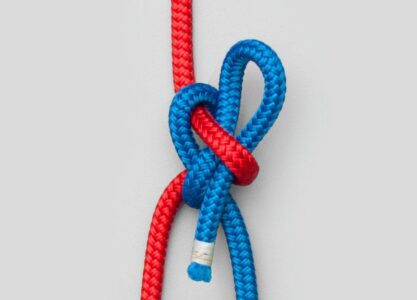
Quick Hitch
The Quick Hitch provides a convenient method for an arborist to pull up a second rope. It is quick to tie, and just as important, quick to release. There is probably no other application for this knot, but it serves this purpose excellently. Quick to tie, and quick to release – the perfect name.
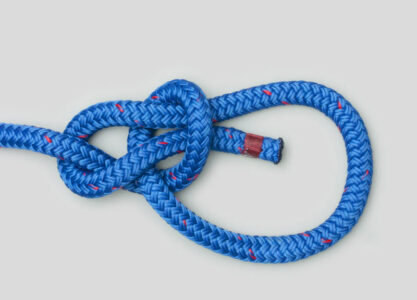
Bowline
A Bowline creates a loop in the end of a rope. Unloaded, it may shake or float undone, but under load it is secure. It is very widely used in boating, climbing, scouting, search and rescue, towing, farming and around the home. Whenever a temporary loop is needed in the end of a rope, a Bowline is the first knot to consider. Permanent loops in rope are created using an Eye Splice or a Brummel Splice. Loop knots used in Fishing are permanent because they are not intended to be released. The one major disadvantage to a Bowline is that tying and untying it under a load are both impossible. See the Midshipman’s Hitch below.
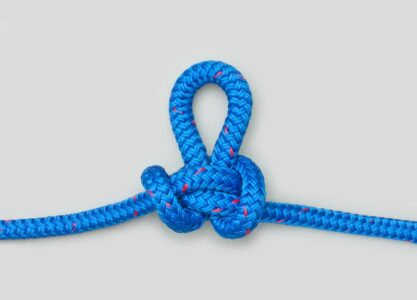
Alpine Butterfly Loop
An Alpine Butterfly Loop provides a secure loop in the middle of a piece of rope. Load can be safely applied from the loop to an end or between the two ends. Also if a length of rope is damaged that section can be isolated so that the rope may still be used – far safer than The Sheep Shank. This knot can be conveniently and quickly tied by wrapping the rope around your hand.

Double Fisherman’s
The Double Fisherman’s Bend or Grapevine Bend, consists of two Strangle Knots (like double overhand knots) each tied round the other standing end. For load-bearing with modern high modulus ropes such as Spectra, Dyneema or Kevlar/Technora, use a Triple Fisherman’s. The triple, or even quadruple, version is also used by fishermen to join two lengths of fishing line. The Double Fisherman’s is the way to join two ends of a line to form a Prusik Loop and is also an excellent and reliable way of joining two climbing ropes. It can be used for a full rope-length abseil, after which it should still be possible to retrieve the rope.
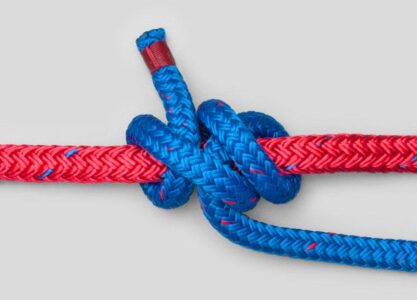
Rolling Hitch (Taut-Line Hitch)
A Rolling Hitch attaches a rope (usually smaller) to another (usually larger). This version correctly shows that for rope to rope the second turn is “tucked in” above the first turn. For rope to pole the wraps may be adjacent and not tucked. The line of pull must be almost parallel. If the tension is away from the standing rope or pole, this knot is likely to fail.
If you are in the arborist business or need arborist tools, resources, or equipment, Blue Ridge Arborist Supplies has everything you need. We carry a complete line of the best arborist supplies. Call us today and let us help you at 540.485.4235 — or find us on Facebook.
Reference: [https://www.animatedknots.com/top-5-arborist-knots]
